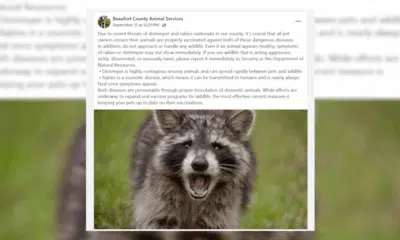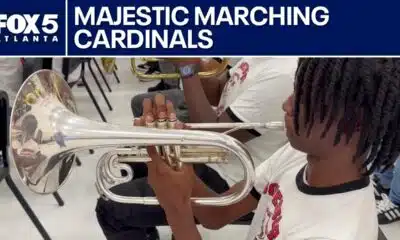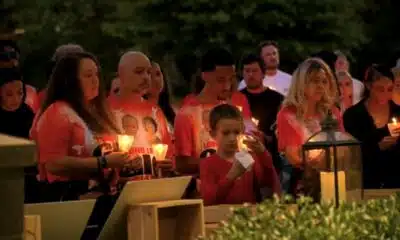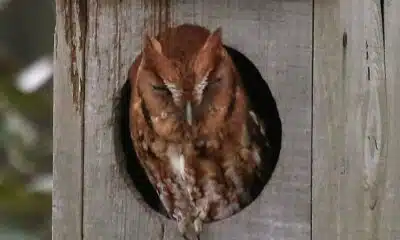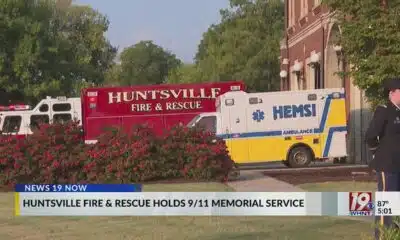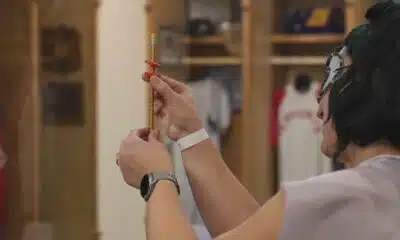News from the South - West Virginia News Feed
Is West Virginia — and the rest of the country — prepared to care for our seniors?
by Ellen Allen, West Virginia Watch
April 24, 2025
I lost my 92 year old mother after a long illness last month.
My mother passed away peacefully in her home at The Havens, an assisted living facility where she resided for a little more than the last five years of her life. I helped her make the transition from her home to The Havens in December of 2019 immediately prior to the public health emergency of COVID that forever changed life in America.
Initially reluctant, my mother was persuaded by the 24-hour access to personalized care services. Prior to the move, she began experiencing episodes of uncontrollable blood pressure spikes that landed her repeatedly in the emergency room in the middle of the night. She lived alone and was scared and vulnerable. The on-site personalized care my mother received at The Havens unequivocally extended her life, as well as its quality. The nursing staff were able to monitor and control her blood pressure, eliminating visits to the ER.
Thanks to the living situation and options available to her, she was able to share more time with me and her granddaughter.
Unfortunately, the majority of West Virginians cannot afford access to such care. My mother had the foresight — and resources — to purchase long-term care insurance over 20 years ago. She watched the health crises of her mother and siblings and did not want to experience the same fate.
Today, 76% of nursing homes residents in West Virginia are covered by Medicaid: That’s over 49,000 residents in just one state. Medicare beneficiaries rely on Medicaid for assistance with services not covered by Medicare, particularly long term care.
There is an unprecedented and unnecessary attack on one of the largest health insurance programs in the country. The GOP has plans to rip Medicaid from our seniors — and every other person assisted by Medicaid — in the current budget process. Under the current proposal, West Virginia stands to lose over a half a billion federal dollars. And we all saw a few weeks ago how eager West Virginia Republicans are to throw tens of thousands of their constituents under the bus if Congress cuts the program. They didn’t even wait for their Congressional delegation. They preempted them by attempting to sneak in a Medicaid trigger bill signaling the message: Hey, it’s OK, we don’t care if you gut Medicaid. We are ready and willing.
The only thing that stopped them was you and all of us. You responded. We showed up. We all said no. And it was not with a whisper but with one concerted voice: Hands off our health care.
Life according to the GOP is they have theirs — we are on our own to figure out how to pay for health care, irrespective of our age, vulnerabilities or circumstances.
Do you have a mother or father or grandparent who may soon need assisted living or skilled nursing? The average cost of assisted living in West Virginia is $5,500 per month. The average cost of a semi-private room in a West Virginia skilled nursing facility is $11,619 per month.
Medicaid helps pay for many of these costs. Medicaid provides health care for over 70 million Americans, including 7.2 million seniors. It provides essential coverage for expenses like long-term care, medical equipment, hospitalization, and prescription drugs. As the single largest payer to long-term care services in the country, middle-class families depend on Medicaid to help take care of their loved ones. Six in 10 nursing home residents count on Medicaid for the long-term care they need — that’s 5.6 million older Americans.
West Virginians for Affordable Health Care urges lawmakers to look out for the best interests of their fellow West Virginia residents. We urge you to protect our health care and reject yet another tax cut that only benefits billionaires.
GET THE MORNING HEADLINES.
West Virginia Watch is part of States Newsroom, a nonprofit news network supported by grants and a coalition of donors as a 501c(3) public charity. West Virginia Watch maintains editorial independence. Contact Editor Leann Ray for questions: info@westvirginiawatch.com.
The post Is West Virginia — and the rest of the country — prepared to care for our seniors? appeared first on westvirginiawatch.com
Note: The following A.I. based commentary is not part of the original article, reproduced above, but is offered in the hopes that it will promote greater media literacy and critical thinking, by making any potential bias more visible to the reader –Staff Editor.
Political Bias Assessment: Left-Leaning
The content expresses strong criticism of the GOP’s stance on Medicaid, portraying their policies as harmful to seniors and vulnerable populations. It aligns with progressive values by advocating for the protection of Medicaid, particularly for long-term care and low-income families. The argument suggests that the GOP’s proposed cuts would disproportionately impact those relying on public health programs, presenting the narrative as a moral issue about healthcare access. The language used, such as “unprecedented and unnecessary attack” and “life according to the GOP,” frames the issue in a way that signals alignment with left-leaning political views that emphasize social safety nets and government intervention in healthcare.
News from the South - West Virginia News Feed
Ohio neighborhood fears landslide as retaining wall slips
SUMMARY: In Portsmouth, Ohio, a retaining wall has been slipping for about five years, causing fear among residents like the Yuri family who moved in just before the slip began. Despite support beams installed two years ago, cracks in the wall allow water to gush through, flooding parts of the road and raising concerns about a potential catastrophic landslide. Local councilman Shawn Dun highlights questions about the wall’s stability and estimates repair costs near $2 million, with the city seeking grants to fund the work. Residents anxiously await repairs, hoping the problem will be resolved soon to prevent disaster.
A cloud of concern hovers over one Portsmouth neighborhood. Those living along Richardson Road wonder how much longer a retaining wall will hold and keep a hillside from sliding that would damage their property. The support wall began slipping 5 years ago. A couple years later, support beams were put in place for a problem that those living along the street say is a ticking time bomb.
FULL STORY: https://wchstv.com/news/local/a-ticking-time-bomb-has-a-portsmouth-neighborhood-living-in-fear
_________________________________________
For the latest local and national news, visit our website: https://wchstv.com/
Sign up for our newsletter: https://wchstv.com/sign-up
Follow WCHS-TV on social media:
Facebook: https://www.facebook.com/eyewitnessnewscharleston/
Twitter: https://twitter.com/wchs8fox11
Instagram: https://www.instagram.com/wchs8fox11/
News from the South - West Virginia News Feed
Christian's Latest Forecast: More Dry Days; Rain Potential Late Next Week
SUMMARY: Storm Watch meteorologist Christian Boler reports mild, mostly dry weather continuing through the weekend with temperatures around 80°F and partly cloudy skies. A high-pressure system will maintain these warm, dry conditions into early next week. Some unorganized tropical rainstorms may bring isolated showers from Tuesday night into Wednesday morning, followed by a dry midweek. Saturday promises significant rainfall, helping to relieve recent dry and minor drought conditions affecting vegetation. Temperatures have shifted from below to above average this week but will dip below average later in the month. Overall, expect more dry days with rain potential late next week, improving moisture levels regionally.
FOLLOW US ON FACEBOOK AND TWITTER: https://facebook.com/WOAYNewsWatch https://twitter.com/WOAYNewsWatch.
News from the South - West Virginia News Feed
Road-widening project gets completion date, property issues remain unclear
SUMMARY: The Cross Lanes road-widening project, expanding Route 622 from Golf Mountain Road to Route 62 near Andrew Jackson Middle School, has resumed after a ten-month pause. Originally set for completion in June 2025, the new completion date is February 2027 due to delays caused by utility pole relocations. Construction is causing traffic congestion, especially around the Kroger turning light, which is being studied for timing adjustments. Despite frustrations, officials emphasize the long-term benefits. Property issues, including damage claims and easements, remain unresolved. Kanawha County lawmakers continue to provide updates as the project progresses.
Source
-
News from the South - North Carolina News Feed6 days ago
What we know about Charlie Kirk shooting suspect, how he was caught
-
News from the South - North Carolina News Feed6 days ago
Federal hate crime charge sought in Charlotte stabbing | North Carolina
-
Our Mississippi Home5 days ago
Screech Owls – Small but Cute
-
News from the South - Arkansas News Feed6 days ago
NW Arkansas Championship expected to bring money to Rogers
-
News from the South - Louisiana News Feed7 days ago
Haynes wanted in on Wildlife bribery scheme too, informant says
-
News from the South - Alabama News Feed7 days ago
Huntsville Fire & Rescue Holds 9/11 Memorial Service | Sept. 11, 2025 | News 19 at 5 p.m.
-
News from the South - North Carolina News Feed6 days ago
Under pressure, some immigrants are leaving American dreams behind
-
Mississippi News Video6 days ago
Mississippi Science Fest showcases STEAM events, activities









